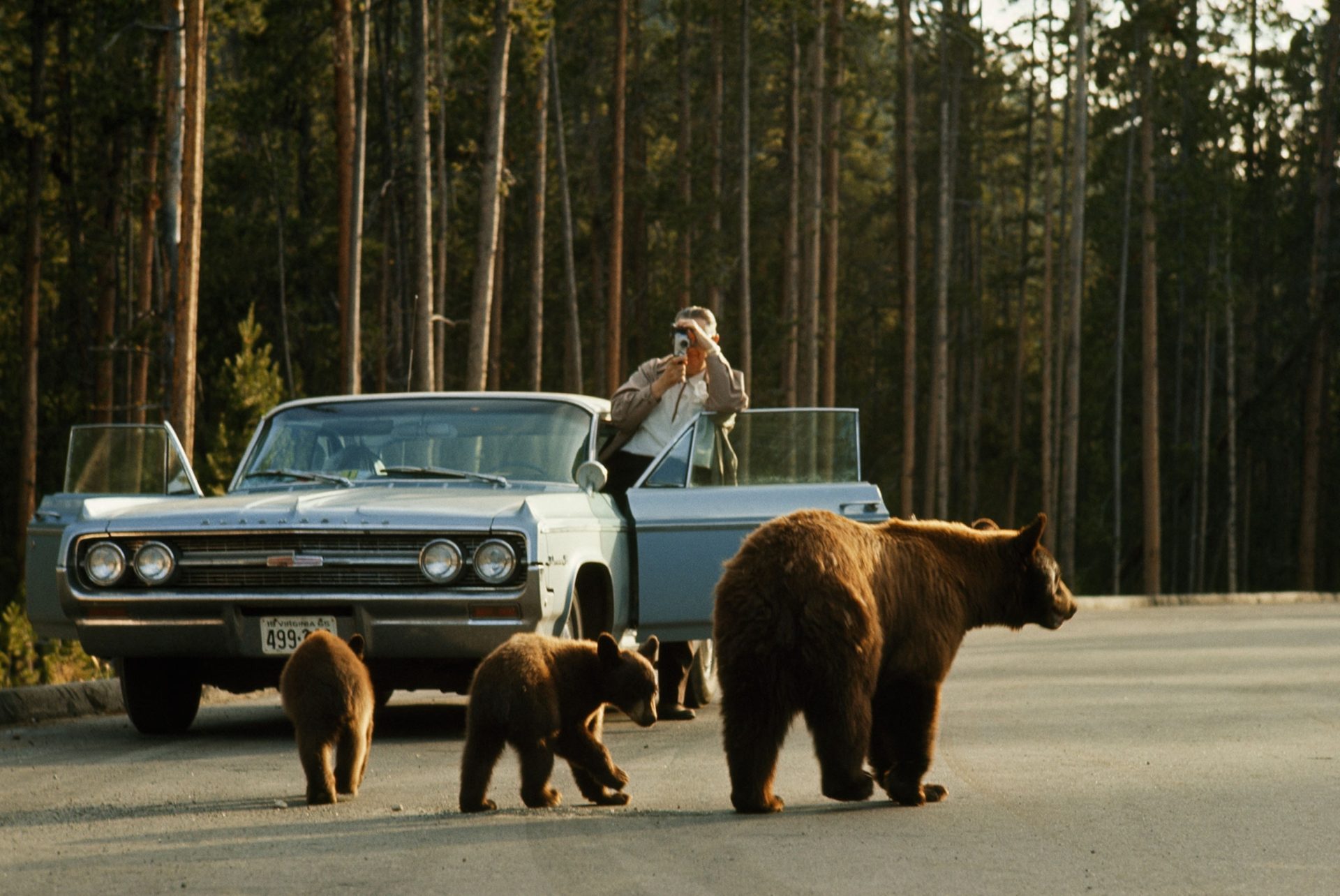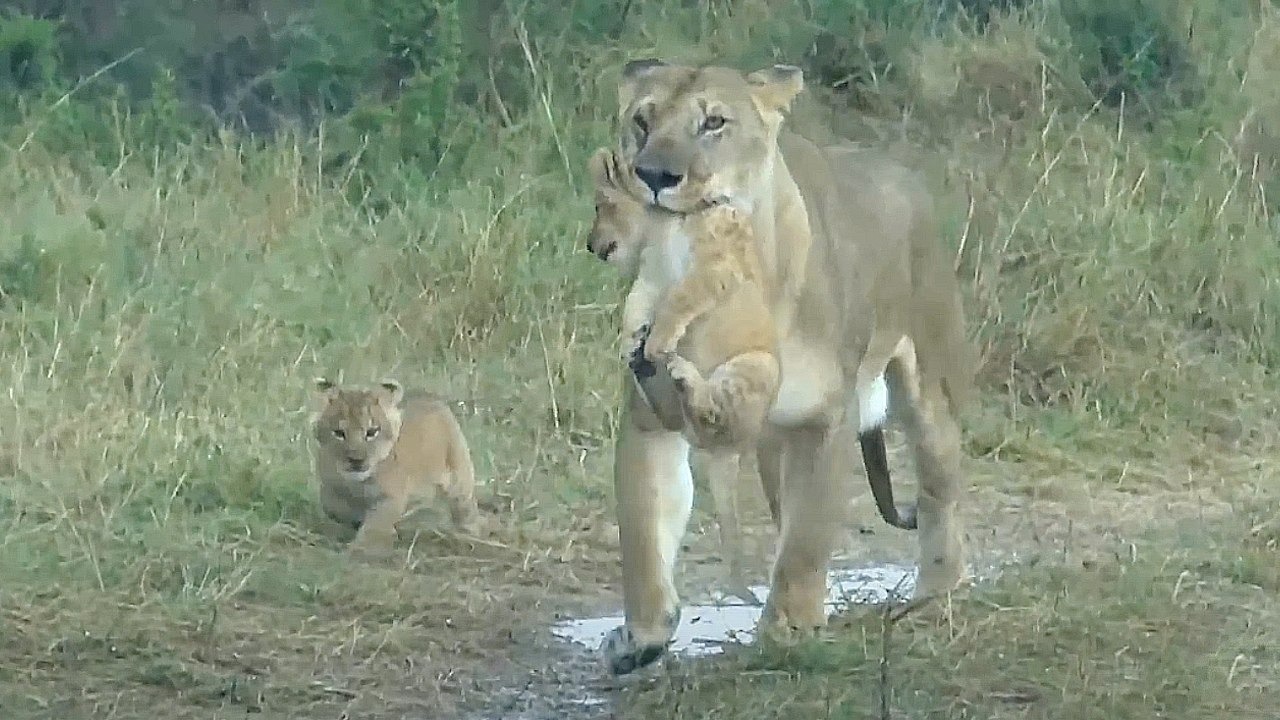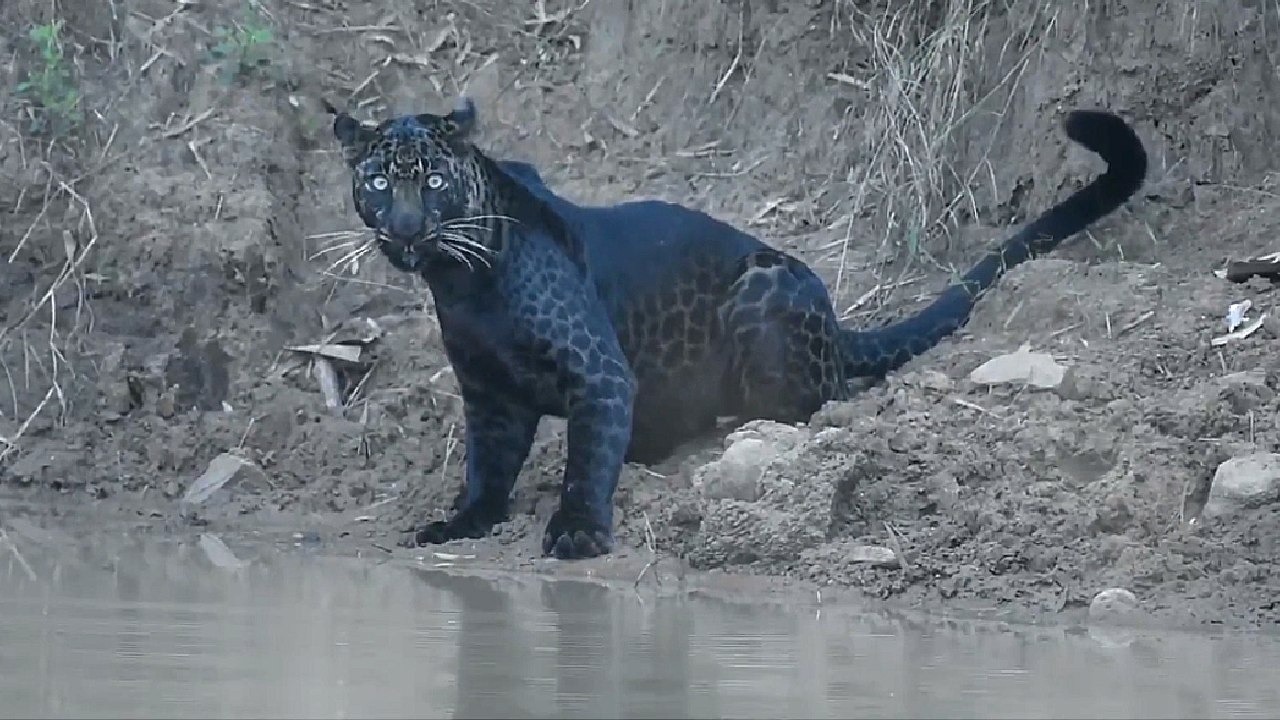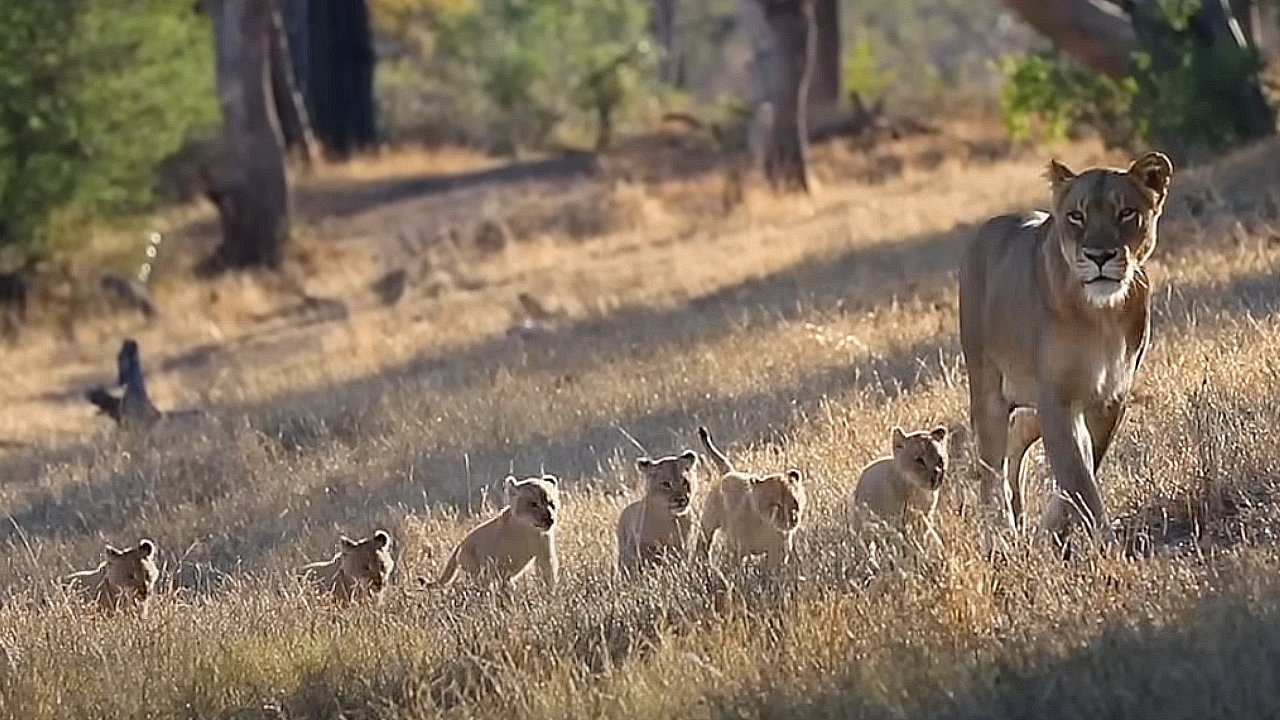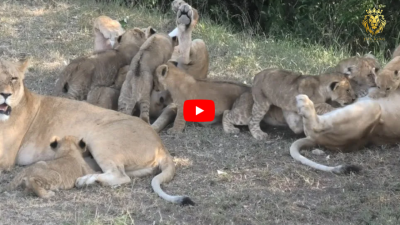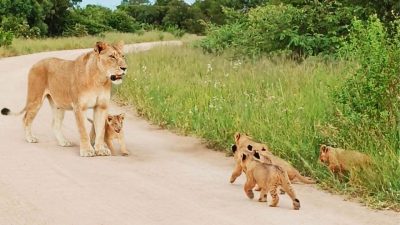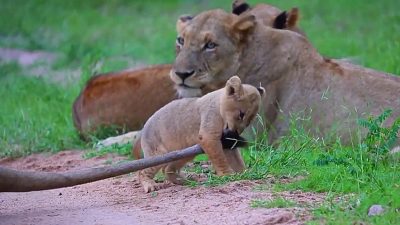Should you curl up in a ball or make yourself seem big and scary? These expert tips could save your life—whether you’re on the trail or in your own backyard.
Unexpected run-ins with wild animals can occur in our backyards, on a hike, in the water, or on a vacation getaway. Though animal attacks are rare, certain human activities can trigger or help prevent them. Here are best practices and expert tips that may help save your life.
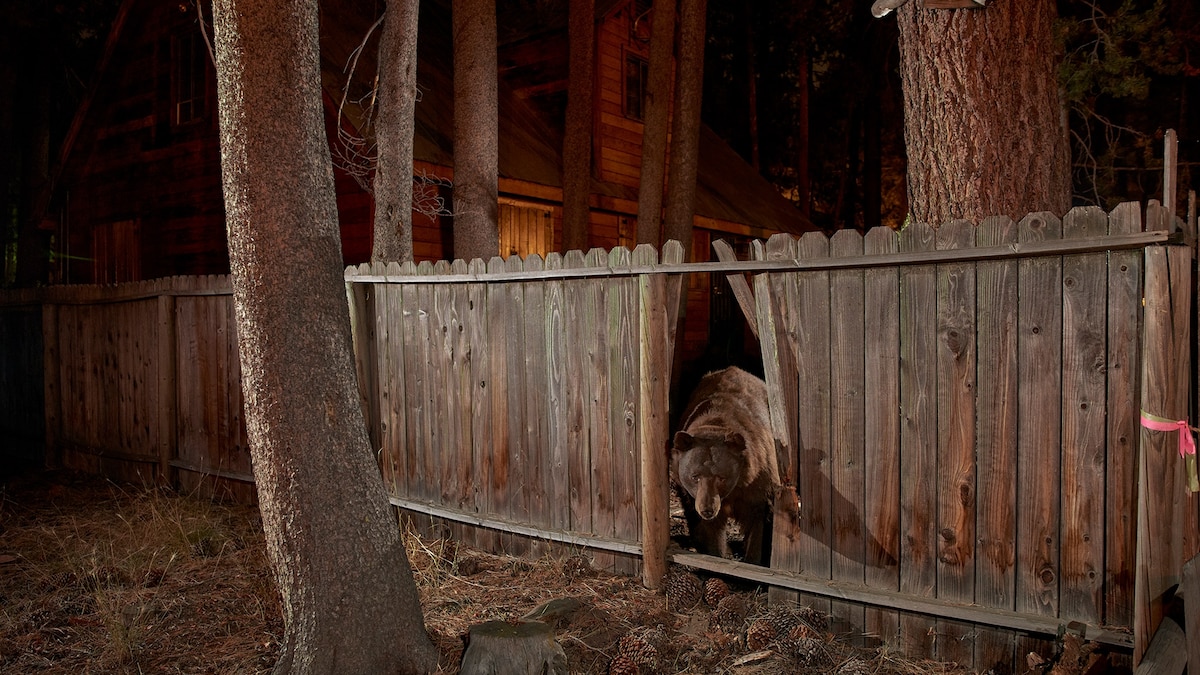
What to do if you see a bear
Top tips: If you do happen upon a bear (or it happens upon you), the U.S. National Park Service advises you to stay where you are or move slowly to the side. Don’t run or scream. Don’t climb a tree since both grizzlies and black bears can climb, too. Instead, make yourself seem like difficult, big prey: Slowly wave your arms to make yourself appear large and try to remain calm. Talk out loud, both to calm yourself and to indicate to the bear that you’re a human, the agency advises.
If attacked: If attacked by a grizzly bear, the NPS says you should play dead, lying with your stomach down (since it’s more easily ripped open) and leave your backpack on (if you have one) to better protect yourself. The advice is different with a smaller black bear: Don’t play dead. Instead, try to escape or fight back, NPS says, adding that you should concentrate your hits on the animal’s face and muzzle.
Better prevention: Make a lot of noise when in bear country to keep animals from being startled, and avoid food sources like berry bushes. Keep your own food and trash securely stowed and travel in groups. With bears and all animals, never place yourself between a mother and her young.
What to do if you see an alligator
Top tips: Pets look like tasty prey to alligators—they’re an ideal size—so avoid swimming with your dog and keep pets away from waters where alligators have been seen in the past. Leashing pets and keeping away from the water is important, and the Texas Parks and Wildlife Department advises people to keep pets inside a fenced area or in the house for a few days after spotting an alligator, since the reptiles have such a good sense of smell.
If attacked: The best defense is to poke at an alligator’s eyes and hit it on the head. With these blows, try to get the animal to gag and release you. When the animal opens its mouth to reposition, take advantage of the moment and flee. Run away in a straight line as fast as you can. To snag nearby prey, alligators can run up to 35 miles per hour on land, according to the Texas Parks and Wildlife Department, so speed is essential.
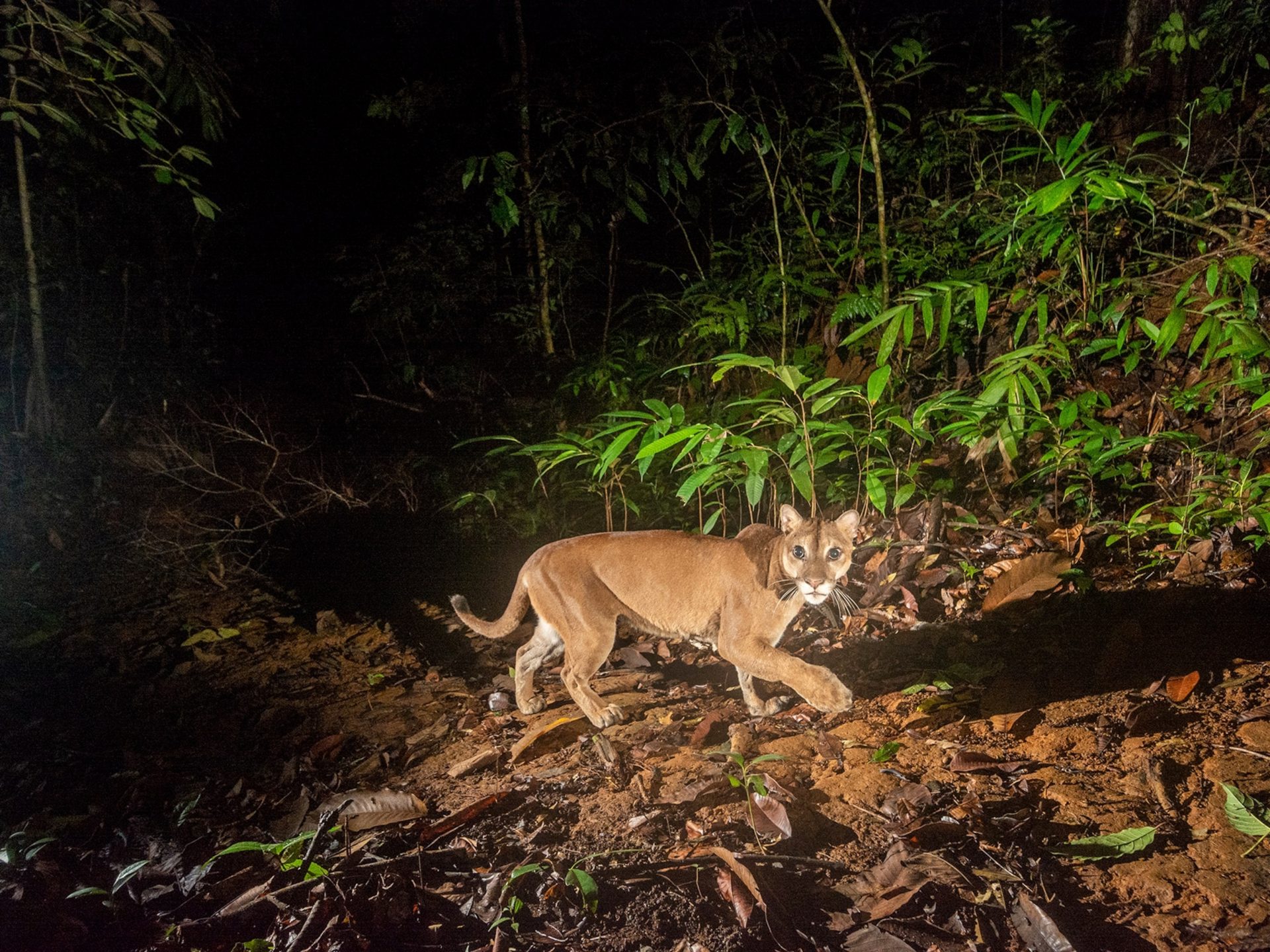
Be aggressive and make loud sounds if you encounter a cougar. The animals, which are also sometimes called mountain lions or pumas, are typically intimidated by humans.
Better prevention: Avoid swimming at night when gators are most active, suggests the Florida Fish and Wildlife Conservation Commission, and never try to feed the animals or swim in areas where warnings are posted.
What to do if you see a cougar
Top tips: Quietly move away if the animal didn’t seem to notice you, but if it already has try to make yourself appear big by raising your arms slowly or opening your jacket over your head, suggests the Humane Society of the United States. If you happen to have an umbrella, quickly open and close it while facing the cougar to try to scare it off.
“I like to clap my hands hard and yell all at the same time. Face the cat and be aggressive—take two quick steps towards the cat or even charge the animal, which is the best way to send them running,” says Mark Elbroch, the Puma Program Director for Panthera, a global wildlife conservation group. Don’t run away, he adds, since the big cats can always outrun humans. “Keep your eyes on the animal. Don’t look away. If the cougar comes closer and none of those tactics have worked, throw objects like rocks or water bottles at it.”
Better prevention: Watch for signs of the big cat including claw marks and scat on hiking trails, and select campsites far from rock overhangs and cliffs or thick brush.
If attacked: If the animal attacks, fight back in any way you can.
What to do if you see a bison
Top tips: Bison attacks are rare but they can be deadly. The animals can move at speeds of 30 miles per hour or more, hop over high fences, and are also strong swimmers. Stay in your vehicle if possible and don’t walk towards the animal to get a closer look. If it seems to have noticed you, you’re too close and should back away slowly, according to the Utah Division of Wildlife Resources.
Better prevention: Stay at least 25 yards away and preferably stay in your car.
If attacked: Run.
What to do if you see a coyote
Top tips: As with bears, make noise that would alert the animals to your presence, and if one still approaches, try to make yourself look big and wave your arms, according to the California Department of Fish and Wildlife.
If attacked: The Humane Society of the United States says its tracking indicates there have been only two recorded instances across the U.S. and Canada where people were killed by coyotes. If a coyote does bite a person, it would likely need to be removed from the wild and tested for rabies, so report any attacks to local authorities immediately.
Better prevention: Don’t ever feed coyotes. Keep pets inside at night and secure all garbage and food. Motion-activated lights and electric fencing to better protect livestock are also key deterrents for coyote encounters. (Read more: U.S. government agency accidentally killed almost 3,000 animals in 2021).
What to do if you see a moose
Top tips: Don’t ever try feed a moose or see it up close, and make sure to keep any pets leashed around the animals. Just as with bears, try to make noise if you are in known moose habitat, and if you spot one then slowly back away in the direction you came, talk, and try to remain calm. The Alaska Department of Fish and Game notes that more people are injured by moose than by bears in the state each year.
If attacked: If a moose charges you, the Utah Division of Wildlife Resources and the Alaska authorities both suggest hiding behind a solid, large object like a tree, or seek refuge inside a vehicle or building. If the animal does knock you down, however, “curl into a ball, protect your head, and lie still until the moose retreats,” the Utah authorities advise. Don’t move again until the moose has moved far away.
Better prevention: Keep your distance.
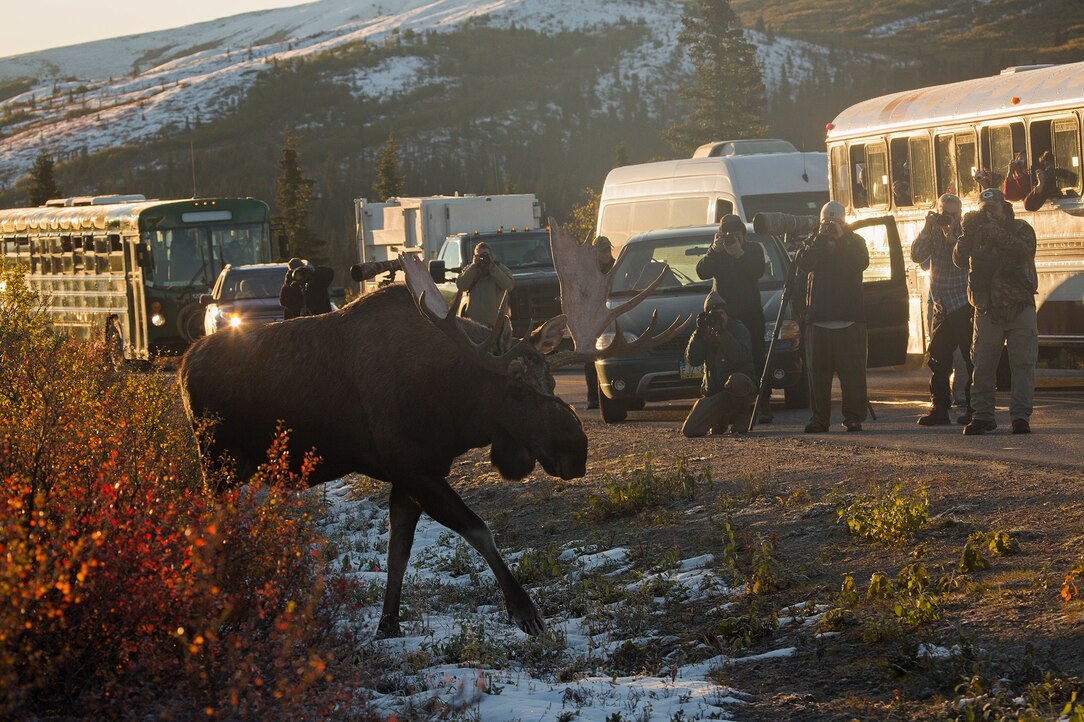
Tourists stop to photograph a moose in Denali National Park, in Alaska. In that state, more people are injured by moose than by bears each year, and it’s important to give the big animal a wide berth.
What to do if you see a snake
Top tips: Snakes usually won’t attack unless provoked, so leave them alone and try to give them space when you’re outside. If one’s in your home, it’s best to vacate the room, shut the door, stuff a towel in the crack, and call a professional for help.
If attacked: Assume the snake is venomous. Do not apply a tourniquet or attempt to suck out any venom, advises the U.S. Centers for Disease Control and Prevention. Try to sit or lie still and remain calm while you await help. Take a photograph of the snake from a safe distance if possible to help with treatment, the CDC says. If possible, also clean the wound, cover it, and mark the edge of the affected area on the skin with the time.
Better prevention: Never pick up a snake, even if you think it’s dead. Wear thick shoes and long pants if hiking in areas with snakes, and poke at the ground in front of you with a long stick when possible.
What to do if you see a shark
Top tips: Sharks are most active at night or during twilight, so take a dip during the day and stay in groups. Don’t let your pets in waters known to be frequented by sharks, and don’t enter the waters if you are bleeding or menstruating. Bright colored clothing may also attract unwanted shark attention, warns the Florida Fish and Wildlife Conservation Commission.
If attacked: “If you see a shark around you, exit the water as calmly and quickly as you can. A lot of these species are ambush predators, like white sharks, so often there’s not much that you can do once an attack has taken place—it’s all about prevention,” says Luke Warwick, a marine biologist and director of the sharks and rays program at the Wildlife Conservation Society. If you are attacked, the most sensitive part of a shark is its nose, which is a bundle of nerves, and its eyes. “The nose, eyes, and gills are what I would target. Those are the softer bits it needs to survive.”
Better prevention: If you are going in waters that may have sharks, the best way to avoid them is to only swim during the daytime. “If you are going in the water at dawn and dusk there’s heightened risk,” says Warwick. “That’s when fish tend to feed, and sharks will be feeding on them, and lights are also lower,” he says. If you see one of the animals, it is key to remain calm, as sharks are attracted to movements that resemble those of thrashing fish. Most attacks of humans are cases of mistaken identity or opportunistic attacks from old or sickened sharks, Warwick adds. We humans just aren’t as filling—we don’t have blubber. (Related: A growing number of people are eating shark, though not everyone knows they’re eating it.)
What to do if you see lions or cheetahs
Top tips: If you come upon a lion while it’s resting, back away. Usually, resting lions will stay resting as long as you don’t illicit their interest, says Kim Young-Overton, program director for Panthera’s Kaza and Cheetah program. It’s unlikely you’d come upon a cheetah while on foot since the animals typically avoid humans.
Curious cheetahs or lions may approach a safari vehicle to smell, chew on parts of it, or even climb onto it. “These encounters are extremely rare but do happen—you are in their territory and at their mercy,” Young-Overton says. “The best thing to do is always keep all of your limbs in the car, start the vehicle, and carefully move away from any animal that looks like it may want to interact with or climb onto the vehicle, before it does.”
A curious cheetah may reach out to touch a person or their camera, she adds, but it’s important not to react and to remain still until the animal loses interest. Definitely do not to reach out and try to touch the cheetah. “Cheetahs are rarely aggressive towards humans,” but even a playful swipe can cause a deep wound or laceration, Young-Overton warns.
Lions, however, are larger, bolder, and a single swipe can seriously injure or kill a human. If you encounter one, stay calm, avoid eye contact, and don’t try to run or touch the animal. “If you are in a position to carefully and slowly move away from the lion to safety without turning your back on it, then it might be worth doing so. Otherwise, stay put, minimize all movement, and wait.”
If attacked: Cheetah attacks are extremely rare. If a lion does decide to charge you, the only thing you can do is make yourself as big as possible, stand your ground or even move with purpose towards the lion while yelling and making a lot of noise. Do not turn your back or run.
Better prevention: Do not attempt to approach these animals and do stay in your vehicle.
